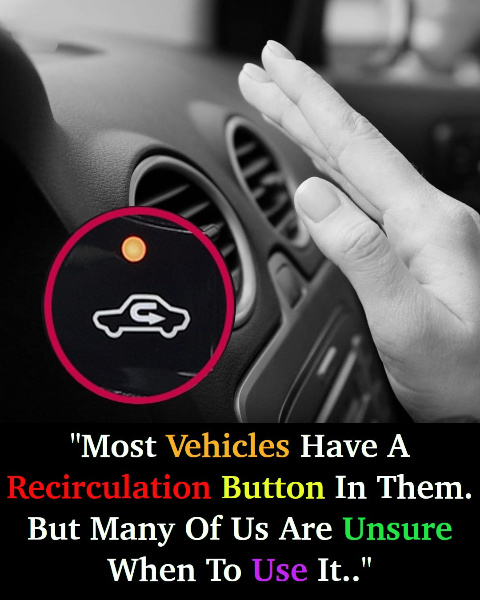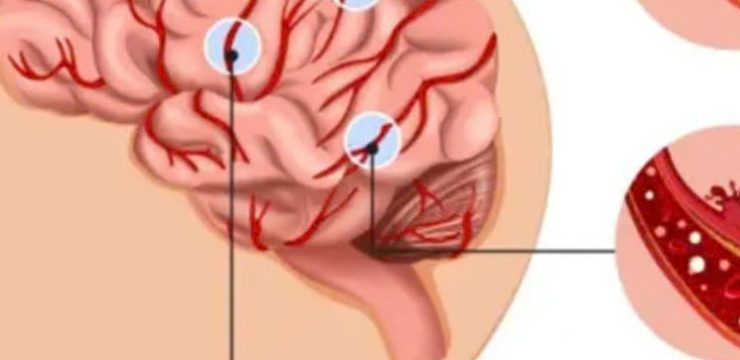Modern cars come with a variety of buttons and controls, each designed to enhance comfort, safety, and efficiency. One feature that often gets overlooked is the air recirculation button. While it may not seem as important as your AC or heater, this small button can significantly improve the air quality and temperature inside your vehicle. Understanding when and how to use it can make your driving experience much more comfortable.

What Is the Air Recirculation Button and How Does It Work?
The air recirculation button, commonly represented by an icon of a car with a circular arrow, prevents outside air from entering the cabin by recirculating the air that’s already inside. When activated, it seals the air inside your car and reuses it, instead of pulling in new, potentially hot or polluted air from outside.
This feature is especially useful on hot days when you need to cool down the car’s interior quickly. By reusing pre-cooled air, your air conditioning system doesn’t have to work as hard to cool down hot outside air, which leads to faster cooling and better energy efficiency.
The Benefits of Using the Air Recirculation Button
The air recirculation button offers more than just cooling your car—it provides multiple benefits that can improve both comfort and efficiency during your drive.
1. Enhanced Fuel Efficiency
One of the most important advantages of using the air recirculation button is improved fuel efficiency. When you recirculate air, your air conditioning system can cool the cabin using air that’s already been chilled. This reduces the load on the AC system, allowing the engine to work less, which in turn saves fuel. Over long drives, especially in hot weather, this can lead to noticeable savings.
2. Cleaner Air Inside the Car
If you’re driving through urban areas or heavy traffic, outside air can be filled with pollutants like exhaust fumes and dust. By switching on the recirculation mode, you can keep those pollutants out and breathe cleaner air inside the car. This is especially helpful for passengers with allergies, asthma, or other respiratory issues. Experts suggest using this mode when driving through industrial areas or during high pollution to reduce exposure to harmful particles.
3. Faster Cooling
There’s nothing better than stepping into a cool car on a sweltering day, and the air recirculation button can help you achieve that faster. By circulating the cooler air that’s already inside the cabin, your AC system doesn’t have to work as hard to lower the temperature. This is especially helpful when outside air temperatures are extremely high. Using the recirculation feature in these situations allows the AC to reach the desired temperature more quickly.
When to Use the Air Recirculation Button
While the air recirculation button is useful, knowing when to use it will help you make the most of this feature. Here are a few ideal scenarios for activating the air recirculation mode:
1. In Hot Weather
During the summer or in hot climates, using the air recirculation button helps the AC system cool the car faster by keeping the cooler air inside. When outside temperatures are high, the last thing you want is for your AC to work harder than necessary to cool down hot air from outside. By recirculating the cabin air, you’ll reach a comfortable temperature much quicker.
2. In Polluted Areas
If you’re driving in areas with poor air quality, like cities or near construction zones, the air recirculation button can prevent polluted air from entering the vehicle. This is especially important for passengers with respiratory sensitivities or allergies. Using this feature keeps out dust, fumes, and other pollutants, ensuring a cleaner, more comfortable ride.
3. To Block Unpleasant Odors
Passing through areas with strong odors, like landfills or farms, can make your drive uncomfortable. In these cases, turning on the air recirculation button can prevent unpleasant smells from entering your vehicle, allowing you to maintain a fresh, odor-free cabin as you continue on your journey.
When Not to Use the Air Recirculation Button
While the air recirculation button offers several advantages, there are times when it’s best to turn it off. Here are a few situations where you should avoid using it:
1. In Cold or Humid Weather
During the winter or in humid conditions, using the air recirculation mode can cause the windows to fog up due to increased moisture levels inside the cabin. Circulating the same air can trap moisture, which leads to condensation on the windows. To prevent foggy windows, switch to fresh air mode in these situations, allowing dry air to circulate and clear the moisture.
2. On Long Drives
If you leave the air recirculation mode on for extended periods, it can cause the air in the cabin to feel stale due to rising carbon dioxide levels. This can make passengers feel uncomfortable. On long trips, it’s a good idea to switch to fresh air mode every so often to allow new, oxygen-rich air into the car.
3. For Passengers with Respiratory Concerns
Although recirculation mode keeps out pollutants, it may not be ideal for passengers with certain respiratory conditions. For those with sensitivities, switching to fresh air mode may provide a better balance by introducing filtered outdoor air into the cabin.
Conclusion: Maximize the Benefits of the Air Recirculation Button
The air recirculation button may seem small, but it plays a big role in enhancing your driving comfort. Whether you’re trying to block out pollution, cool down faster on a hot day, or avoid unpleasant odors, this button is key to a more comfortable and efficient drive.
By knowing when and how to use the air recirculation mode, you can improve air quality inside your car and get more out of your climate control system. Next time you’re driving, don’t overlook this powerful feature—it might just make your trip quieter, cooler, and cleaner!





